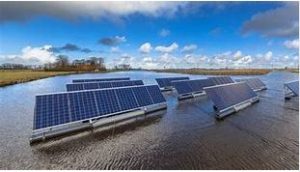
Solar power has been one of the best sources of alternative renewable energy in the world. Solar power can be directly used or stored in a battery for later use. Solar power is heat from the sun, which is captured using several ever-changing technologies. Solar power includes photovoltaic, thermal, solar thermal power, solar architecture and molten salt technologies. This type of technology has made a significant difference in how we live our lives today.
There are a few challenges that we face with. First, we have to deal with the weather and other concerns affecting our ability to capture, store and utilise solar power for our homes and communities. For example, while it may be cold outside, there may still be solar energy available to residential consumers even in areas experiencing high temperatures. Similarly, regions experiencing drought will need to continue to provide sufficient water for residential and commercial applications. While this may be inconvenient, there are utility-scale solar energy projects which can make up the difference for the community if necessary.
One way in which we can exploit the energy from the sun involves thermal collectors. These devices take the energy from the sun’s rays and convert it into an electric current. When using thermal collection, the sun’s heat is collected and transferred to a material that absorbs the energy and converts it into electricity. The equipment also stores the heat so that it can later be utilised during the day. Utility-scale solar energy projects that utilise this method utilise equipment capable of collecting and storing an estimated 101 megawatts of energy from the sun.
Solar power systems utilise three leading technologies: photovoltaic (PV), the concentrating antenna modules (CAM) and the thin film modules (TML). PV is the most commonly used technology for collecting the sun’s energy. It employs photovoltaic cells (PV) to collect the energy, which is transformed directly into electricity. To this end, the PV cells must be carefully positioned on the roof to catch the maximum sunlight. Additionally, since the PV cells will be exposed to varying temperatures, they must also be treated to protect them from damage. Ultimately, the PV cell is the critical player in utilising solar power for utility-scale solar energy projects.
By contrast, the other two technologies utilise alternative methods for converting the sun’s energy into usable energy. On the other hand, the TML uses mirrors to focus light on small areas to induce direct electric currents. These techniques collectively allow for the capture and conversion of the sun’s thermal energy into usable electricity. To harness the sun’s energy, Combine these technologies with techniques such as those utilised by utility companies. As a result, it is possible to create an energy source that is reliable, cost-effective, and readily available.
Both the CAM and TML are effective methods for generating electricity from solar radiation. However, the primary distinction between the two is the method of gathering solar radiation. The CAM is the more traditional of the two because it focuses the radiation onto a photovoltaic array to collect it. This array then undergoes a process of converting the energy into electrical energy.
There are many ways in which to use Solar power Adelaide to produce electricity. In addition to the many ways mentioned above, solar collectors can be built to heat water for domestic use and use as an alternative energy source for producing electricity at home. A prime example of this is the solar hot water collector. These collectors heat water using the sun’s energy and convert it into heat energy to produce hot water. Another way to utilise the sun’s energy is to utilise the same technology to generate electricity instead of directly using the sun’s rays.